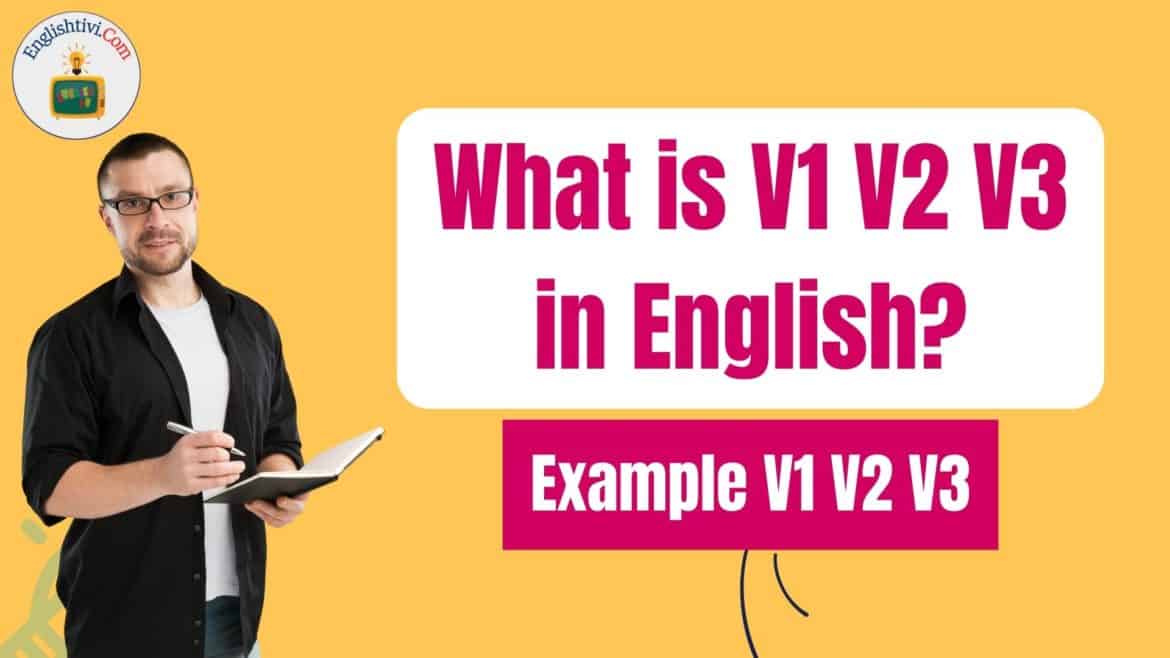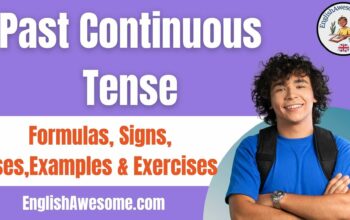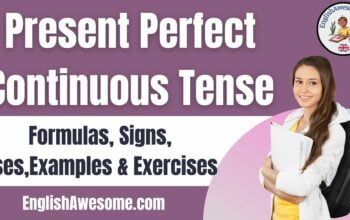You are an English learner, you must have heard of “terms” like V1 V2 V3 of verbs. So, what is V1 V2 V3? Are they acronyms for a word, a phrase, or a symbol?
⏩ Sign Up to Get Bonus
Let's learn more about it with Englishtivi right now!
What is V1 V2 V3 in English?
V1 V2 V3 is the order of columns in the table of irregular verbs in English. In which, V means Verb and the numbers 1, 2, 3 are the ordinal numbers of the columns, corresponding to the verb forms, specifically as follows:
+ V1: Verb infinitive, standing in the first column.
+ V2: The verb conjugate in the past form (Past), stands in the second column.
+ V3: The verb is in the past participle form, standing in the 3rd column.
Regular verbs and Irregular verbs
Regular verbs | Irregular verbs |
| The past and participle forms always end with “-ed”. For example: Look (V1) -> Looked (V2) -> Looked (V3) | The past tense and participle form do not follow any rules. For example: Go (V1) -> Went (V2) -> Gone (V3) |
You might also like: Best List of Irregular Verbs in English
Example of V1 V2 V3 in English
V1 V2 V3 that does not change
Example:
| V1 | V2 | V3 |
| beset | beset | beset |
| bet | bet | bet |
| beat | beat | beaten/beat |
| bid | bid | bid |
| burst | burst | burst |
| cast | cast | cast |
| cost | cost | cost |
| cut | cut | cut |
| hear | hear | hear |
| hit | hit | hit |
| hurt | hurt | hurt |
| input | input | input |
| inset | inset | inset |
| ………… | ………… | ………… |
Past Simple V2 verbs & Past Participle V3 are the same
+ V2 V3 ending in “ought” or “aught”
……⇒ _ought ⇒ _ought
…… ⇒ _aught ⇒ _aught
Example:
| V1 | V2 | V3 |
| bring | brought | brought |
| buy | bought | bought |
| catch | caught | caught |
| teach | taught | taught |
+ V1 ending with -ay move to V2, V3 ending with -aid
Example:
| V1 | V2 | V3 |
| lay | laid | laid |
| mislay | mislaid | mislaid |
| say | said | said |
| overlay | overlaid | overlaid |
| overpay | overpaid | overpaid |
| prepay | prepaid | prepaid |
| pay | paid | paid |
| repay | repaid | repaid |
+ V2, V3 change the number of vowels ‘ee’ to ‘e’ and add or change _t or _d at the end
Example:
| V1 | V2 | V3 |
| creep | crept | crept |
| feel | felt | felt |
| feed | fed | fed |
| meet | met | met |
+ V1 verbs ending in _d are changed to V2, V3 endings in _t
Example:
| V1 | V2 | V3 |
| rend | rent | rent |
| rebuild | rebuilt | rebuilt |
| spend | spent | spent |
| lend | lent | lent |
+ V1 verbs end in _m or _n, then V2 and V3 end in _t
Example:
| V1 | V2 | V3 |
| burn | burnt | burnt |
| learn | learnt | learnt |
| mean | meant | meant |
| dream | dreamt | dreamt |
V1 contains i change to V2 is a and V3 is u
This case is also quite common and used a lot in English, so keep this rule in mind so you don’t get confused in using the past word!
Example:
| V1 | V2 | V3 |
| ring | rang | rung |
| begin | began | begun |
| drink | drank | drunk |
| sink | sank | sunk |
V1 ends with _ow, moves to V2 ends with _ew and V3 is _own
Example:
| V1 | V2 | V3 |
| blow | blew | blown |
| know | knew | known |
| grow | grew | grown |
| throw | threw | thrown |
V1 form ending in _ear, moves to V2 are _ore and V3 is_orn
* Except: The verb Hear ⇒ heard ⇒ heard does not follow this rule.
Example:
| V1 | V2 | V3 |
| bear | bore | born |
| tear | tore | torn |
| swear | swore | sworn |
| forbear | forbore | forborn |
Subscribe to the English TV channel on Youtube to improve your English skills.





